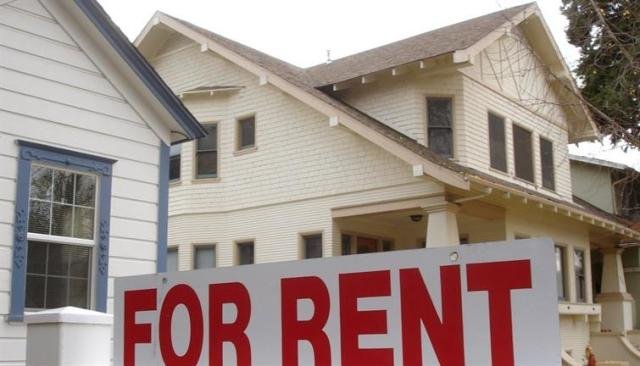The real estate market is perpetually changing, with trends and policies continuously adapting to tackle various economic and social challenges. One such policy that has gained attention in recent years is the anti-flip tax. This tax is designed to curb speculative investments in the housing market, which can lead to inflated property prices and decreased affordability for regular homebuyers. In this article, we will delve deep into the concept of the anti-flip tax, its implications for homebuyers and investors, and strategies to navigate this regulatory landscape.
What is the Anti-Flip Tax?

The anti-flip tax is a regulatory measure imposed by certain governments to discourage the rapid buying and selling of properties, a practice commonly known as “flipping.” In a typical property flip, an investor purchases a property, makes improvements or renovations (or sometimes none at all), and then quickly sells it for a substantial profit. The anti-flip tax is designed to curtail this practice by imposing additional taxes on properties sold within a short time frame after purchase, often within a year or two.
The primary objective of the anti-flip tax is to promote stability in the real estate market by reducing speculative buying. Speculative buying can lead to artificially inflated property prices, contributing to housing bubbles. When too many properties are flipped in a short period, it can result in rapid and unsustainable price increases, making housing less affordable for long-term buyers and residents. By implementing this tax, governments aim to discourage short-term speculative investments and encourage long-term ownership, thus fostering a more stable and balanced real estate market.
Origins and Rationale

The concept of the anti-flip tax emerged as a response to the housing crisis observed in various parts of the world. Rapid property flipping was identified as a contributing factor to inflated housing markets, making homes less affordable for average buyers. By imposing an additional tax on properties sold within a short timeframe, usually less than a year, governments aim to:
- Reduce Market Volatility: Quick turnovers can lead to significant price swings, creating an unstable market environment.
- Promote Long-Term Ownership: Encouraging buyers to hold onto properties for longer periods can foster community stability and reduce speculative behavior.
- Increase Housing Affordability: By curbing speculative demand, housing prices can become more aligned with the actual market demand from end-users.
How Does the Anti-Flip Tax Work?

The specifics of the anti-flip tax can vary by jurisdiction, but the general principle remains consistent. Here’s a typical framework of how this tax might be implemented:
- Time-Based Criteria: The tax is applied if a property is sold within a specified period after purchase, often within 12 months.
- Tax Rate: The tax rate can be a fixed percentage of the sale price or the profit made from the sale. In some cases, it might be progressive, increasing the profit margin.
- Exemptions: Certain transactions might be exempt, such as sales due to unforeseen circumstances (e.g., job relocation, medical emergencies) or sales by owner-occupiers who have lived in the property for a specified period.
Example Scenario
Imagine a property purchased for $300,000 and sold six months later for $350,000. If the jurisdiction imposes a 20% anti-flip tax on the profit, the tax liability would be calculated as follows:
- Profit: $350,000 – $300,000 = $50,000
- Tax: 20% of $50,000 = $10,000
Thus, the seller would owe $10,000 in anti-flip tax on top of other standard taxes and fees associated with the sale.
Implications for Homebuyers and Investors

The anti-flip tax has several implications for different stakeholders in the real estate market. Understanding these can help you make informed decisions.
For Homebuyers
- Affordability: Reduced speculative activity can lead to more stable and potentially lower housing prices, making homes more affordable for regular buyers.
- Market Stability: A more stable market can reduce the risk of sudden price drops, providing more confidence in making long-term investments in property.
For Investors
- Long-Term Investment Strategy: Investors may need to shift from short-term flipping to long-term holding strategies. This can involve focusing on rental income and property appreciation over time.
- Tax Planning: Proper tax planning becomes essential to mitigate the impact of the anti-flip tax. This might include timing the sale of properties to fall outside the taxable period or exploring exemptions where applicable.
- Market Research: In-depth market research is crucial to identify areas where property values are expected to grow steadily over time, rather than relying on quick, speculative gains.
Potential Challenges

- Reduced Liquidity: Investors may face reduced liquidity as they might have to hold onto properties longer to avoid the tax, potentially limiting their ability to quickly reallocate capital.
- Increased Costs: The additional tax can increase the overall cost of flipping, reducing profit margins and making it less attractive compared to other investment opportunities.
Strategies to Navigate the Anti-Flip Tax
Both homebuyers and investors can adopt various strategies to effectively navigate the anti-flip tax landscape. Understanding these strategies is crucial for making informed decisions that align with financial goals while complying with tax regulations.
For Homebuyers
1. Research and Patience
- Market Analysis: Conduct thorough market research to identify properties with good long-term value. Look for neighborhoods with strong growth potential, good schools, and amenities that attract stable, long-term residents.
- Avoid Overpaying: Patience in the buying process can lead to better deals. Avoid rushing into purchases driven by speculative inflation, and instead focus on fair market value.
- Historical Trends: Analyze historical price trends in the area to understand past performance and future potential.
2. Professional Advice
- Real Estate Agents: Engage experienced real estate agents who have in-depth knowledge of the local market and can provide valuable insights.
- Financial Advisors: Consult with financial advisors to understand the full financial implications of the anti-flip tax and how it fits into your broader financial plan.
- Legal Counsel: Seek advice from legal professionals to ensure all transactions comply with local real estate laws and tax regulations.
For Investors
1. Long-Term Holdings
- Focus on Growth Markets: Shift focus from quick flips to long-term property holdings. This can involve buying properties in emerging markets with high growth potential.
- Value Addition: Invest in properties where you can add value through renovations, upgrades, or improved management to increase long-term profitability.
- Steady Income: Consider rental properties that provide steady income over time, which can be more sustainable than frequent flips.
2. Diversification
- Portfolio Mix: Diversify your real estate portfolio to spread risk. This can include a mix of residential, commercial, and rental properties across different locations.
- Market Types: Invest in various types of markets (urban, suburban, rural) to take advantage of different growth dynamics and minimize exposure to market-specific downturns.
- Asset Classes: Explore different asset classes within real estate, such as multifamily units, office spaces, retail properties, and industrial properties.
3. Tax Planning
- Tax Professionals: Work with tax professionals to understand the anti-flip tax regulations in your area and develop strategies to minimize tax liability.
- Exemptions and Deductions: Leverage available exemptions, deductions, and credits to reduce taxable income. For instance, capital improvements on a property can sometimes be deducted.
- Strategic Timing: Plan property sales strategically to minimize tax impact. This might involve holding properties for longer periods to avoid higher tax rates associated with quick flips.
- Tax-Deferred Exchanges: Consider using tax-deferred exchange strategies, such as 1031 exchanges in the U.S., to defer capital gains taxes when selling one property and purchasing another.
Conclusion
The anti-flip tax represents a significant shift in the real estate landscape, aiming to curb speculative investments and promote market stability. For homebuyers, it offers the promise of more affordable and stable housing markets. For investors, it necessitates a reevaluation of strategies, focusing on long-term value and careful tax planning. By understanding and adapting to these changes, both homebuyers and investors can navigate the anti-flip tax effectively, making informed decisions that align with their financial goals and market conditions.










